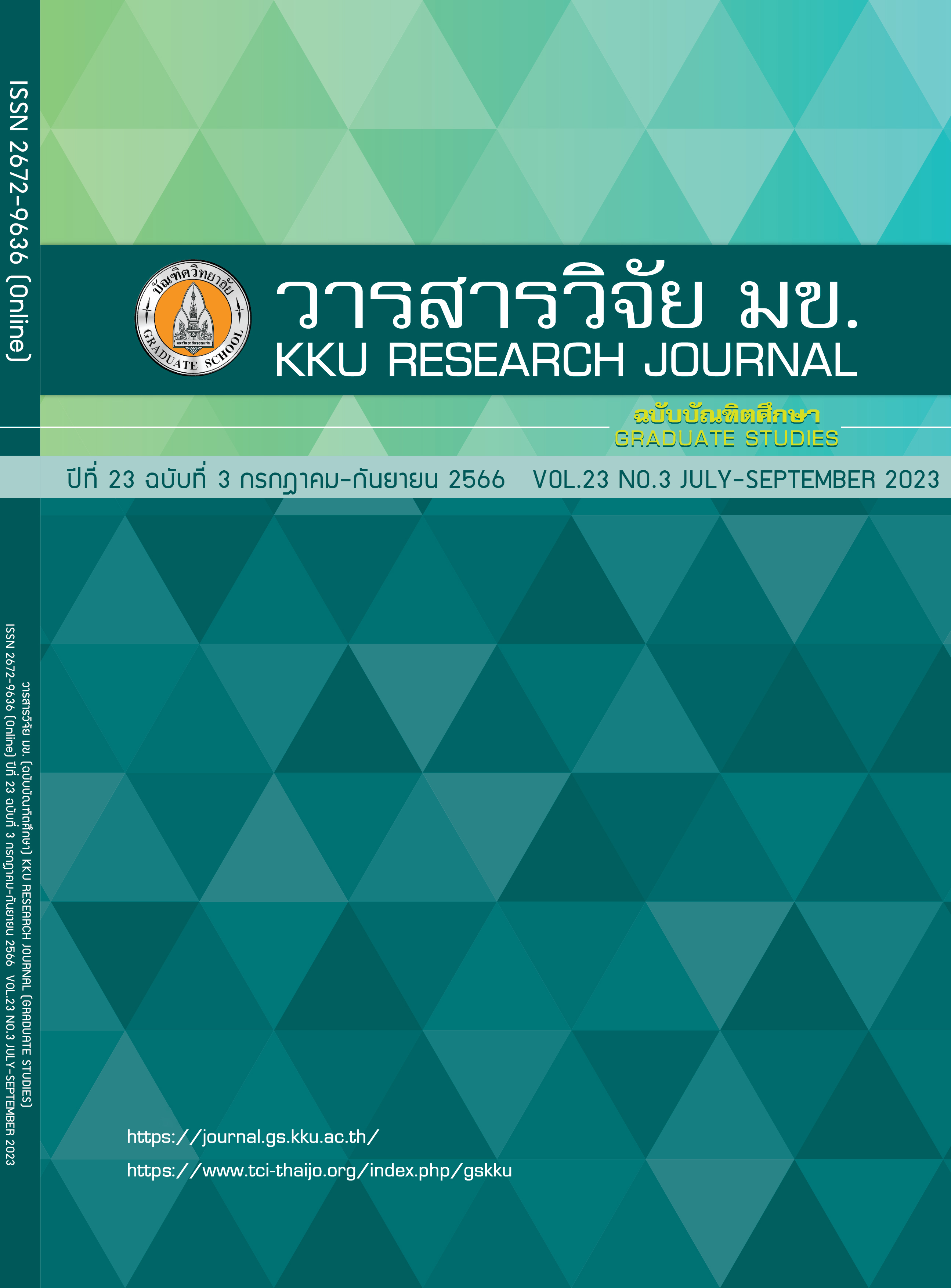Self-Healable Epoxy Vitrimer Crosslinked With Dual-Networks
Keywords:
Epoxy vitrimer, Self-healing, Stress relaxationAbstract
Epoxy is a widely used coating for protecting metal materials, but epoxy coatings are generally not self-healing when there are cracks or scratches on the coating layer. To solve these problems, new kind of epoxy has been developed. Epoxy vitrimer has various smart functions such as self-healing, reprocessing, self-welding has been used for various applications. In this research, the epoxy vitrimer containing dual networks is studied. Two curing agents viz, cashew nut shell liquid (CNSL) and 4-aminophenyl disulfide (AFD) were used for preparation of epoxy vitrimer. The effect of AFD content on self-healing ability and other properties were investigated. The epoxy vitrimer cured with CNSL and AFD showed two-stages curing process at temperature of 161 - 170 °C and 195 - 200 °C. The stress relaxation time of epoxy vitrimer decreased with increasing AFD content. The highest self-healing efficiency was found to be 96% for epoxy vitrimer containing AFD 30 wt%. The self-healable epoxy vitrimer could be applied for smart applications such as coating.
References
Yang Y, Xu Y, Ji Y, Wei Y. Functional epoxy vitrimers and composites. Prog Mater Sci [Online] 2021; 120(June 2020): 100710. Available from: https://doi.org/10.1016/j.pmatsci.2020.100710
Capricho JC, Fox B, Hameed N. Multifunctionality in Epoxy Resins. Polym Rev [Online] 2020; 60(1): 1–41. Available from: https://doi.org/10.1080/15583724.2019.1650063
Legrand A, Soulié-Ziakovic C. Silica-Epoxy Vitrimer Nanocomposites. Macromolecules 2016; 49(16): 5893–5902.
Denissen W, Winne JM, Du Prez FE. Vitrimers: Permanent organic networks with glass-like fluidity. Chem Sci 2016; 7(1): 30–38.
Kasemsiri P, Neramittagapong A, Chindaprasirt P. Graphical abstract SC. Elsevier BV [Online] 2014; . Available from: http://dx.doi.org/10.1016/j.tca.2014.11.031
Rwahwire S, Tomkova B, Periyasamy AP, Kale BM. Green thermoset reinforced biocomposites [Online]. Green Composites for Automotive Applications. Elsevier Ltd; 2018. 61–80 p. Available from: http://dx.doi.org/10.1016/B978-0-08-102177-4.00003-3
Lorwanishpaisarn N, Kasemsiri P, Srikhao N, Son C, Kim S, Theerakulpisut S, et al. Carbon fiber/epoxy vitrimer composite patch cured with bio-based curing agents for one-step repair metallic sheet and its recyclability. J Appl Polym Sci 2021; 138(47): 1–12.
Kasemsiri P, Neramittagapong A, Chindaprasirt P. Erratum: Curing kinetic, thermal and adhesive properties of epoxy resin cured with cashew nut shell liquid (Thermochimica Acta (2014) 600C (20-27)). Thermochim Acta 2015; 608: 76.
Lorwanishpaisarn N, Srikhao N, Jetsrisuparb K, Knijnenburg JTN, Theerakulpisut S, Okhawilai M, et al. Self-healing Ability of Epoxy Vitrimer Nanocomposites Containing Bio-Based Curing Agents and Carbon Nanotubes for Corrosion Protection. J Polym Environ [Online] 2021; (0123456789). Available from: https://doi.org/10.1007/s10924-021-02213-3
Li B, Zhu G, Hao Y, Ren T. An investigation on the performance of epoxy vitrimers based on disulfide bond. J Appl Polym Sci 2022; 139(5): 1–11.
Chen M, Zhou L, Wu Y, Zhao X, Zhang Y. Rapid Stress Relaxation and Moderate Temperature of Malleability Enabled by the Synergy of Disulfide Metathesis and Carboxylate Transesterification in Epoxy Vitrimers. ACS Macro Lett 2019; 8(3): 255–260.
Wang M, Gao H, Wang Z, Mao Y, Yang J, Wu B, et al. Rapid self-healed vitrimers via tailored hydroxyl esters and disulfide bonds. Polymer (Guildf) 2022; 248(December 2021).
Memon H, Wei Y. Welding and reprocessing of disulfide-containing thermoset epoxy resin exhibiting behavior reminiscent of a thermoplastic. J Appl Polym Sci 2020; 137(47): 1–10.
Downloads
Published
Issue
Section
License
Copyright (c) 2023 KKU Research Journal (Graduate Studies)

This work is licensed under a Creative Commons Attribution-NonCommercial-NoDerivatives 4.0 International License.



